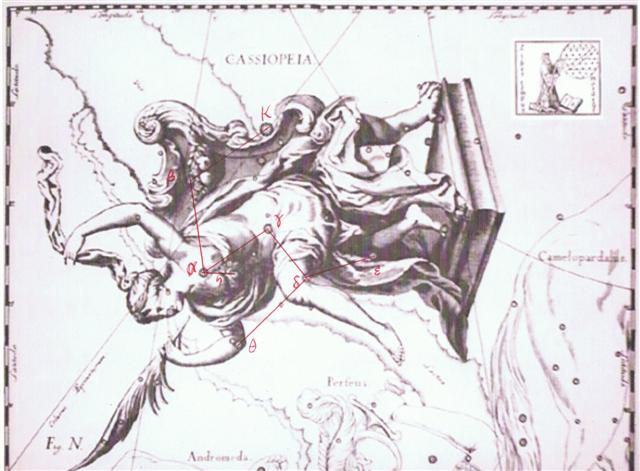My main goal, after having provisionally assumed a star chart on side a of the G text and a heliacal calendar on side a of the C text, should be to try to find out whether the G glyphs indeed basically depict such aspects which can be correlated with stars.
I suggested the beginning of side a refers to the point from where the two horns of the Bull diverge, the Hyades door, where once - around 64 * 71 = 4544 years before my assumed rongorongo time (1842 A.D.) the Sun rose at the March equinox. Counting anew: 4544 - 1842 + 1 = ca 2703 B.C. Possibly we should think 100 * 27 = 2700 B.C. But maybe my key precessional number 71 should be a more precise figure. 26000 / 366 = 71.03825136. And anyhow 1842 A.D. is only a guess. And I assumed the nakshatra dates should be derived from the heliacal stars via a star calendar from the time of Al Sharatain, but that the glyphs should be compared with the heliacal stars of rongorongo times and have I counted from a RA grid around 1842 A.D. The 'door' at the 'rainy Hyades' was visible in the night sky of November 22-23 (326-327) and in May 23-24 (143-144) the Moon was at the 5th Chinese Fox station Heart ruled by σ Scorpii at RA 247.
When using my assumed star calendar it maybe could be stated that the Sun went through the Hyades door when the center of Cassiopeia's W (Cih, γ) was close to the Full Moon:
RA 247.0 (σ Scorpii) - RA 12.4 (Cih) = 234.6 or ca 183 + 52 nights. But perhaps we should instead count 234.6 / 466 = ca 50 %. ... The Arabians called it Al Dhāt al Kursiyy, the Lady in the Chair - Chilmead's Dhath Alcursi, - the Greek proper name having no significance to them; but the early Arabs had a very different figure here, in no way connected with the Lady as generally is supposed, - their Kaff al Hadib, the large Hand [cfr Caph] Stained with Henna, the bright stars marking the fingertips; although in this they included the nebulous group in the left hand of Perseus. Chrysococca gave it thus in the Low Greek Χείρ βεβαμένη; and it sometimes was the Hand of, i.e. next to, the Pleiades, while Smyth said that in Arabia it even bore the title of that group, Al Thurayya, from its comparatively condensed figure. The early Arabs additionally made Two Dogs out of Cassiopeia and Cepheus, from which may have come Bayer's Canis; but his Cerva, a Roe, is not explained, although La Lande asserted that the Egyptian sphere of Petosiris had shown a Deer to the north of the Fishes. Al Tizini imagined a Kneeling Camel from some of its larger stars, whence the constellation's name Shuter found with Al Nasr al Din, and common for that animal in Persia ... Cb1-10--11 has a fist held high in front and 403 = 392 + 11. October 27 (300) = November 23 (327) - 27. Cb1-13 has a sign of W, possibly to indicate how the Sun (south of the equator) was on his way. I needed to repeat this in order to ascertain consistency in my writings. Another method is to use several sequences of numbers in parallel with the glyphs and dates. This makes it easier to detect mistakes - like the pair of strands in DNA.
| ||||||||||||||||||||||||||||||||||||||||||||||||||||||||||||||||||||||||||||||||||||||||||||||||||||||||||||||||||||||||||||||||||||||||||||||||||||||||











